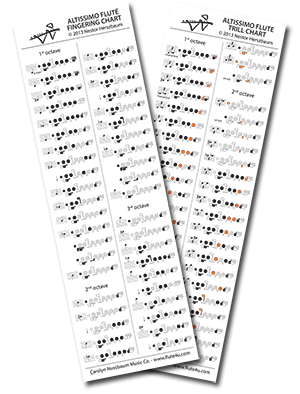#excerpt
-
A Midsummer Night's Dream
Felix Mendelssohn (1809-1847) wrote the incidental music to Ein Sommernachtstraum - A Midsummer Night's Dream in 1842.
There are many famous movements in this piece such as the Wedding March, but the Scherzo is one that as flutists we know best since it's an audition excerpt.
Even though Felix Mendelssohn was a romantic composer the Scherzo sounds classical, and we need to approach the general character and articulation of this movement as such.
-
Classical Symphony
Sergei Prokofiev (1891-1953) wrote his Symphony No.1 in D major, op. 25, commonly known as Classical in 1916-1917. Its four movements are 1. Allegro, 2. Larghetto, 3. Gavotte: Non Troppo Allegro and 4. Finale: Molto Vivace.
Excerpts from this symphony are very often part of the required repertoire for orchestral auditions. In particular, passages from the Finale, due to its fast tempo and technical difficulty. Extracts from the Larghetto are common as well, where rhythmic accuracy, a clear tone and good intonation in the third register are indispensable.
-
Daphnis and Chloé - alto flute
Maurice Ravel (1875-1937) started writing Daphnis et Chloé, his ballet in three scenes, in 1909, and it was premiered in 1912.
This ballet, and its suites, which are more often performed, are a treat for flutists.
All four flute parts in this piece (piccolo, first and second flutes, and alto flute) are important audition pieces. One of its most beautiful moments is the alto flute solo, which is often asked for in Associate Principal auditions.
-
Harmonics for Fast Passages
One of the most useful ways to utilize harmonics, besides color and pitch changes, is to facilitate fast passages in the third octave of the flute.
By using harmonics of the octave or fifth (actually twelfth, but for simplification purposes we’ll refer to them as fifth) we can avoid some of the awkward cross-fingerings inherent to the third octave.
Below let’s examine some passages of the solo and orchestral repertoire where harmonic fingerings come to our help.
-
Orchestral Excerpts List
Most famous composers have written beautiful flute solos in their orchestral works. Those solos are worth practicing on their own and are essential for orchestral auditions. In addition to knowing the flute part well, a flutist must also know what the other instruments in the orchestra are playing and the musical context of those solos. Below I list some of the most common orchestral excerpts, and when available, their flute parts, orchestral scores, and links to a few articles about them that I have written in this blog.
-
The Carnival of the Animals
Camille Saint-Saëns (1835-1921) wrote Les Carnaval des Animaux - The Carnival of the Animals, in 1886.
Of the 14 movements in this piece, 3 require a flute/piccolo: Aquarium, Volière and Final. The 10th movement, Volière (The Aviary), is both beautiful and technically challenging. The quickness of some of the passages call for alternative fingerings, which follow.




